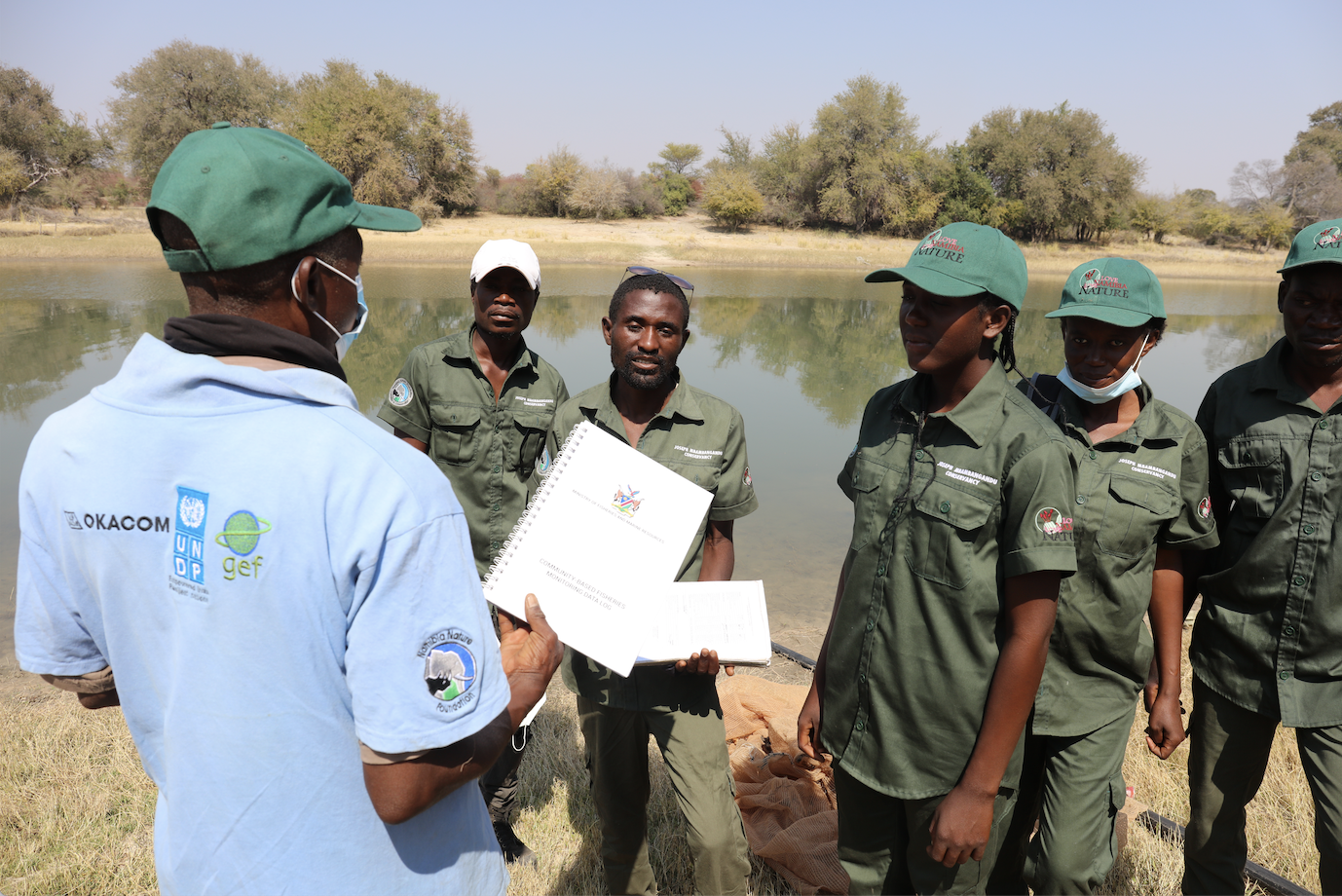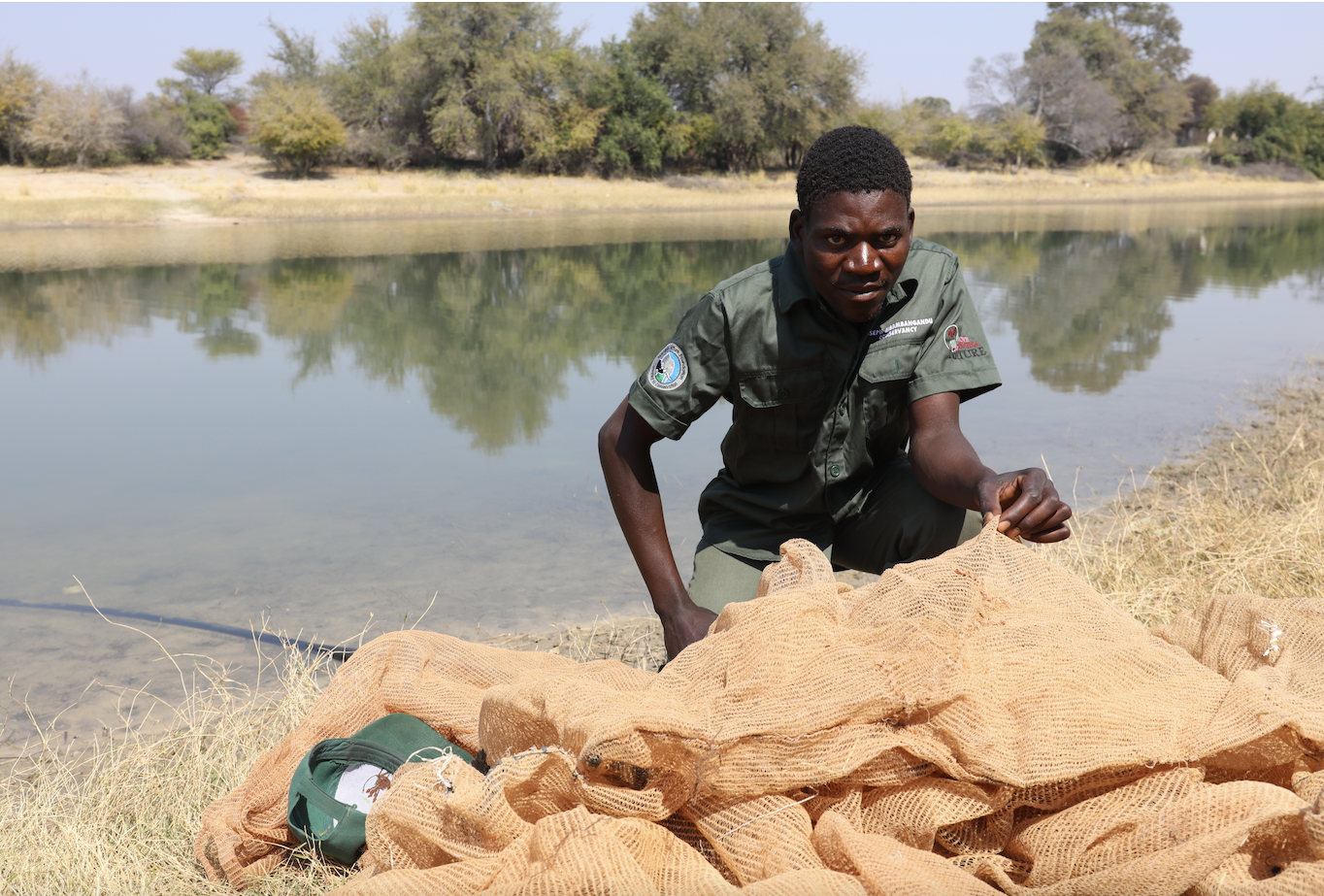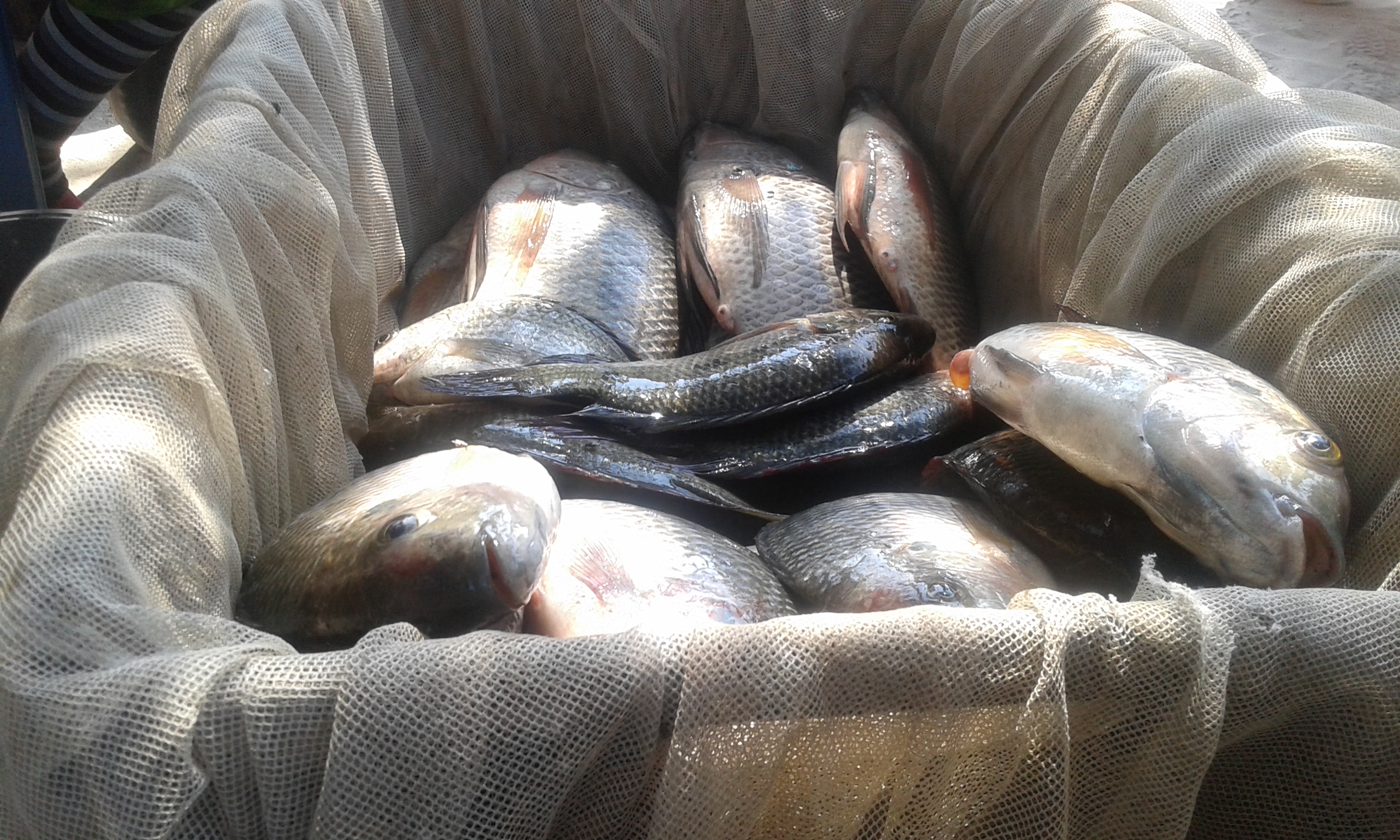- Home
- About Us
- Background
- Mandate
- Cubango Okavango River Basin
- Governance
- Strategy and Approach
- Member States
- Our Work
- Partners
- Climate Resilient Infrastructure Development Facility (CRIDF)
- European Union (EU)
- Southern African Development Community (SADC)
- Swedish International Development Cooperation Agency (SIDA)
- The World Bank (WB)
- United Nations Development Programme (UNDP)
- United States Agency For International Development (USAID)
- Resources
- News and Events
- Opportunities
- Contact Us
- FAQ's
- Connect With Us
- i
- t
- f

Participatory Community Fisheries Management for Sustainable Livelihoods
Tuesday, September 14, 2021



The Improving Conservation and Sustainable Use of Shared Fish Resources through Co-management Demonstration Project is supported by the United Nations Development Project with funding from the Global Environmental Facility through OKACOM. Working in collaboration with the Ministry of Fisheries and Marine Resources (MFMR) of Namibia and the local NGO Namibia Nature Foundation (NNF) as the implementing partner, the demonstration project aims to facilitate the establishment of community-based Fisheries Protected Areas (FPA) in the Joseph Mbambangandu Conservancy, located in Kavango-East region. Human driven factors such as unregulated fishing practices, overfishing, use of dragnets and mosquito nets have resulted in declining fish catches on the Okavango River. The establishment of FPA aims to promote participatory fisheries management and empower local communities to implement community agreed measures to counter unsustainable fishing and allow fisheries stock to recover. This approach is aimed at a long-term goal to secure fisheries as a sustainable livelihood. By July 2020, eight community-based fish guards and fish monitors, were recruited, trained and equipped to effectively work with the community, government fisheries officials and NNF in implementing sustainable fish practices. Here are some insights from the men and women involved in facilitating community-based sustainable fishing practices within their communities.
The Joseph Mbambangandu Conservancy covers the rural villages of Tjeye, Mantjenya, Gove and Utokota, which line the banks of the Okavango River. Rainfed agriculture, fishing and seasonal floodplain gardening form the main livelihood activities. In 2018, OKACOM engaged local stakeholders through the Okavango Basin Management Committee to discuss how the Conservancy could demonstrate community-based fisheries management through co-management. The approach is new in the Kavango region although it has been implemented in Zambezi region with sound success.
Alfons Kandjewere, the Chairperson of the Conservancy who was part of the consultations says, “During the flood season the water rises and we noted that some species such as tiger fish, barbel fish and bream are no longer common. However, these are fish which are supposed to be here, so we discussed with the Ministry of Fisheries to establish the conservancy as a Fisheries Protected Area”. Through its’ Management Committee, the Conservancy has been working with the Ministry and NNF to consult all the village communities on the need to establish an FPA and agree on the fishing practices to be accepted in the conservancy. Eight men and women underwent training to serve as fish guards and fish monitors, tasked with enforcing sustainable fishing practises, documenting fishing activities and fishermen catches throughout the community. They were supported with the provision of uniforms, bicycles for patrolling, camping equipment, torches and binoculars. The bicycles have allowed the fish guards to patrol the riverbanks across the expanse of the four villages and camping equipment has also been provided to ensure that fish guards are able to participate in night operations if required to do so.
Working with the Community
30 year-old Eduard Costa is one of the community members who were trained as a fish guard. Eduard, along with seven other community members work in two shifts along the banks of the Okavango River and having been a fisherman himself, he is well aware of some of the challenges they face daily. “I work patrolling the river, looking out for people practising illegal activities, such as fishermen using monofilament nets. This type of net catches fish which is too small. Sometimes people even use bow and arrow, they disturb the breeding of tilapia, which is harmful and people are not interested when we want to make them aware of this; says Eduard. The fish guards are tasked with actively enforcing fishing regulations and in some cases confiscating fishing equipment.
Hendrina Shimangomango (20) is another fish guard who notes the harmful practices used by community members, “I try to encourage people not to use mosquito nets or shade-nets, but rather use traditional methods such as hook and line, so that fish can grow to bigger size. These other nets are so harmful, as they drag grass along the riverbanks, disturb the breeding of fish and also take along fish eggs and small fish. The community depends on the river for fish, this is for people to eat and it is important that we actually have fish here. Some people lives depend on this,” she says.
The committee members work to create awareness on the long-term effects of illegal fishing methods, such as the use of monofilament nets instead of multifilament nets and potential benefits of practices sustainable fishing. They also encourage community members to use traditional fishing methods such as home-made fishing traps or hook and line methods and as sustainable practices. “People don’t use the traditional method of fishing because they believe they will not catch many fish. Not everyone actually knows how to use a basket, mostly only elderly people know how to. When I was younger, I went fishing with my mother using a trap basket and we caught a lot of fish. No one used to drag net that time, so all these methods are new.” says Alexander Likuwa, a fish guard stationed at Ukotoka village. On main challenge is that the right nets are not available in local shops and community members are forced to use what is available.
Monitoring and Data Collection
To ascertain the potential impact of sustainable fishing practices, data collection and analysis on fish catches is critical. The fish guards and fish monitors have been trained on how to document fishing events such as fish death or diseases and were provided with monitoring forms tools for documentation. The fish monitors and guards have been tasked with ensuring that information regarding the catches is collected on a daily basis. Kashova Mukungu (33) is a fish monitor and is responsible for collecting data during patrols. “We measure the length, weight and take note of the species of the fish. When we get to the river, we ask people to hand over the fish so we can check them, sometimes people refuse. This happens when someone has caught a lot of fish and we have to measure it one by one, this takes quite some time to do, but we need the information” she says. Kashova along with four other fish monitors use the Fish Monitoring Logbook which was developed by NNF in conjunction with the Ministry and printed with the support of the project, to record all data on community fish catches. The data is submitted to the Ministry regional office for the fishing officials to manage, analyse and interpret the records. This data will be used to advise the communities on how the fish resources respond to management interventions and where necessary, amendments can be made to the Fisheries Management Plan.
Learning and Exchange
In 2020, OKACOM supported the conservancy, community leadership, NNF and ministry officials to conduct an exchange visit to communities implementing similar initiatives in Sikunga and Impalila Conservancies in Zambezi region. The visit was an opportunity for exchange of lessons learned on how Fishery Protected Areas are managed including the mandates, administration, benefits distribution to the community and other income generating such as angling. “I learned a lot about the Chairpersons roles, and fisheries conservation project administration by fish monitors and fish guards. At Sikunga, I learned about tourism enterprises and how they are ran, even more about the cultural activities integration on tourism. I learned about how to really manage our natural resources specifically when fish are breeding and what type of traditional methods can actually be used. It was a good opportunity”. says Alfons.
Transboundary Challenges
The Okavango River borders between Angola and Namibia , where communities from both countries share the watercourse. Fishermen from both countries cross to either side of the river to fish and the community from the Joseph Mbambangandu Conservancy has expressed concern about this practice. On the Namibian side, the Joseph Mbambangandu is a legal conservancy while on the Angolan side, the entire stretch is not a conservation area. “The Angolans are a challenge as they use any type of net to fish, while on this side we are stopping people from this. There is no knowledge of fishing policies or rules by our neighbours. We are sharing one river but they do what they want, they cross over and tell us they are in no man’s land. They catch fish at night on the Namibian side and even sell the fish here.” says Alexander.
Efforts are ongoing to establish community-based joint transboundary fisheries management forums to ensure joint efforts are implemented to improve fisheries conservation. Currently, the committee patrols the river banks by foot or bicycle and when possible community members assist them by offering traditional canoes to go down the stream. In July 2021, OKACOM delivered a motorised patrol boat for the conservancy and handed over to the Ministry of Fisheries, to be used by the conservancy. This will enable the committee to patrol the river effectively and increase presence. However, due to low flows this year, the river is currently too shallow to enable patrols with a boat. Having complied with required processes, the Ministry has submitted an application to to gazette the portion of the Okavango River as a FPA at the Joseph Mbambangandu Conservancy. This will ensure that all fishing practices comply with the community established Fisheries Management Plans.
Thematic Areas & Activities
News
subscribe for news notification by email
Photo Credit: Kostatin Luchansky, National Geographic, Okavango Wilderness Project.
© [current-date:custom:Y] [site:name]

